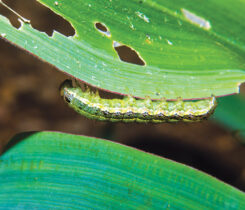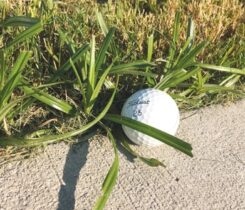Turf Pest of the Month: Get to know annual bluegrass weevil
Superintendents can find annual bluegrass weevil (ABW) in the Eastern part of the country and Canada, although entomologists identified the pest as far west as Wisconsin and as far south as Virginia. Albrecht Koppenhöfer, Ph.D., professor and Extension specialist at Rutgers University’s department of entomology, and Ben McGraw, Ph.D., turfgrass science professor at Penn State University, share what superintendents need to know about this notorious pest.
Resistance Management — There are pesticide-resistant ABWs, depending on location. Koppenhöfer said it’s important to rotate modes of action to prevent further resistance.
“We are concerned that the overuse of the remaining effective insecticides will desensitize ABWs to these compounds as well,” Koppenhöfer said. “Golf course superintendents need to delay resistance development by applying control products only when and where necessary. That requires monitoring and sampling methods.”
Windows to Treat — Superintendents should think about ABW treatment as being in two windows: managing overwintering adults before egg-laying with short-residual, broad-spectrum insecticides and targeting the pest as larvae. Unfortunately, as Koppenhöfer mentioned, pyrethroid-resistant populations continue to expand across a wider region. Research also shows ABW populations also show insensitivity to non-pyrethroid insecticides.
A more curative approach, McGraw said, is to focus on targeting larvae as the pest moves out of the turf. This includes using integrated pest management (IPM) protocols which involve applying controls when the pest is present and above damage thresholds of 30-40 larvae per square foot.
“Our studies indicate that greater numbers of larvae are present during the first generation and potentially more damaging than following generations,” McGraw said. “However, the probability of successfully controlling the first generation is greater than subsequent generations since summer generations (second and third) will overlap with earlier generations. Sampling turf in the summer often reveals all life stages in the same area.”
Combined Approach — Koppenhöfer and McGraw said superintendents need to think about multiple applications in the spring, especially in areas with high ABW pressure.
“It should be stressed that the larvicide application of the combination approach may not be warranted and should only be applied if sampling reveals that the larval population has exceeded thresholds,” Koppenhöfer said.
McGraw and Koppenhöfer’s research shows Poa annua is 10 to 15 times more susceptible to damage than creeping bentgrass. Superintendents with primarily Poa courses could benefit from larvicide applications to keep populations low. But, superintendents need to understand that regardless of turf variety, it’s about management, not eradication.
Scout, Scout, Scout — Another key element to ABW management is scouting. If superintendents opt for IPM, scouting becomes key to understand the amount of pest pressure found on the course.
“Scouting requires destructively sampling turf, typically by removing cores with a cup cutter or knife and placing the material in a saturated saline solution to extract larvae,” McGraw said. “Sampling is critical for determining when larval populations are about to move out of the plant and are susceptible to larvicides. However, it’s impractical for most superintendents to obtain detailed estimates of population structure.”












